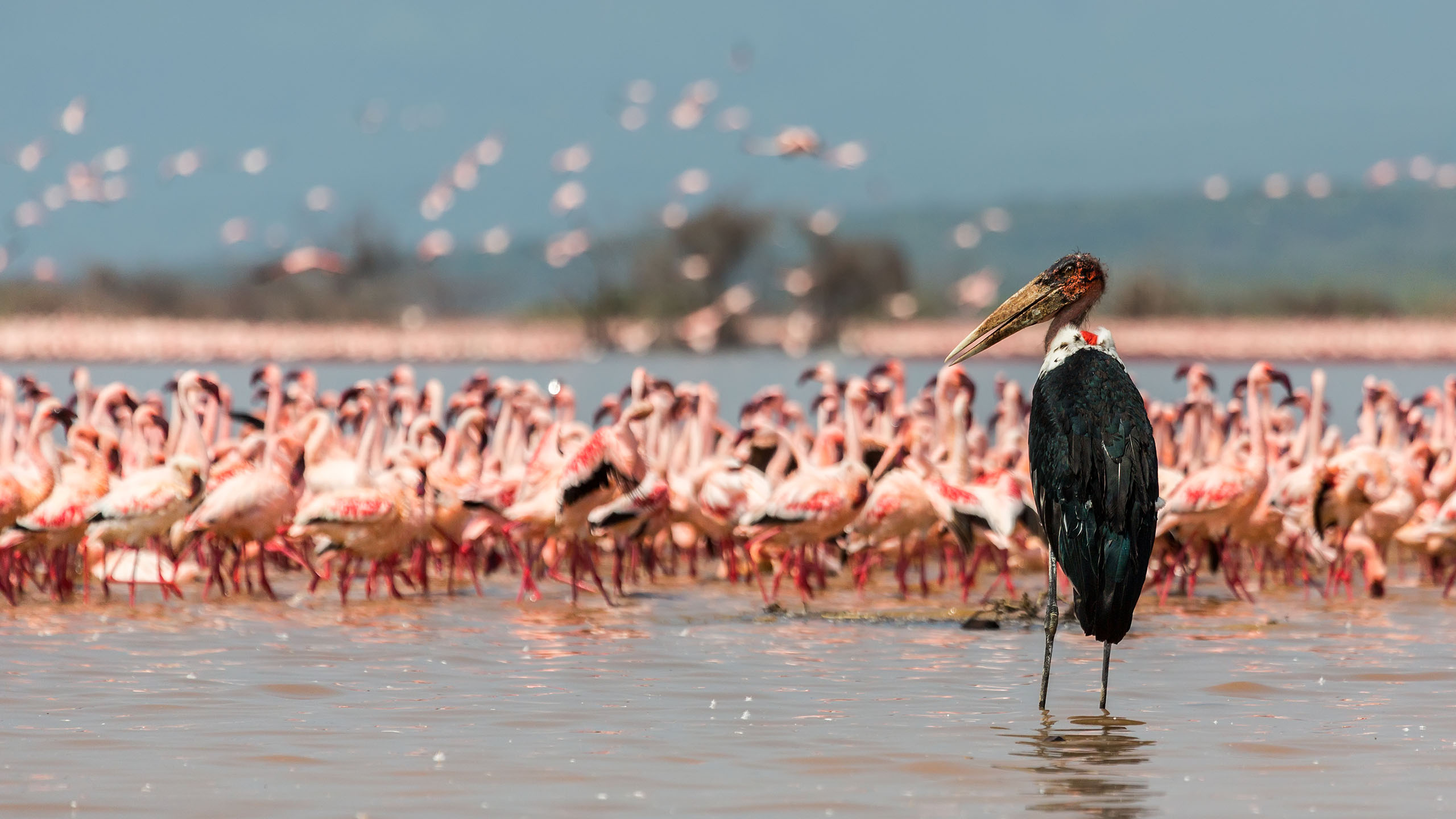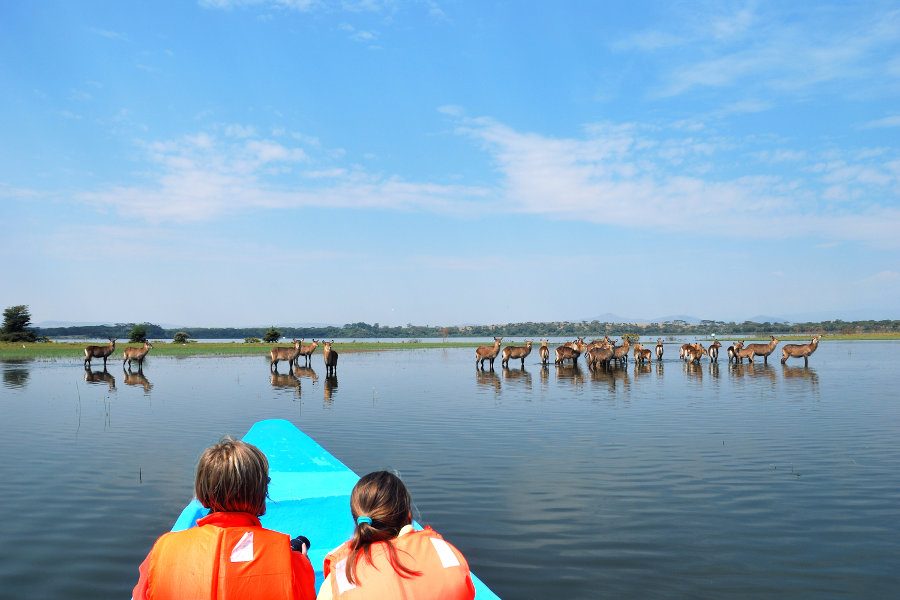Lake Naivasha is a freshwater lake in Kenya, outside the town of Naivasha in Nakuru County, which lies northwest of Nairobi. It is part of the Great Rift Valley. The name derives from the local Maasai name ɛnaɨpɔ́sha, meaning "that which heaves," a common Maasai word for bodies of water larger enough to have wave action when it is windy or stormy. Naivasha arose as the British attempted to pronounce the Maasai name. Lake Naivasha means "Lake Lake."
Location
Lake Naivasha is at the highest elevation of the Kenyan Rift Valley at 1,884 meters (6,181 ft) in a complex geological combination of volcanic rocks and sedimentary deposits from a larger Pleistocene Era lake. Apart from transient streams, the lake is fed by the perennial Malewa and Gilgil rivers. There is no visible outlet, but since the lake water is relatively fresh it is assumed to have an underground outflow.
The lake had a normal surface area of 139 square kilometers (54 sq mi) before 2010 and had increased to 198 square kilometers (76 sq mi) by 2020. It is surrounded by a swamp that covers an area of 64 square kilometers (25 sq mi), but this can vary largely depending on rainfall. It is situated at an altitude of 1,884 meters (6,181 ft). The lake has an average depth of 6 meters (20 ft), with the deepest area being at Crescent Island, at a maximum depth of 30 meters (98 ft). Njorowa Gorge once formed the lake's outlet, but it is now high above the lake and forms the entrance to Hell's Gate National Park. The town of Naivasha (formerly East Nakuru) lies on the north-east edge of the lake.
Ecology
The lake is home to a variety of types of wildlife including over 400 different species of birds and a sizable population of hippos. The fish community in the lake has been highly variable over time, influenced by changes in climate, fishing efforts, and the introduction of invasive species. The most recent shift in the fish population followed the accidental introduction of common carp in 2001. Nine years later, in 2010, common carp accounted for over 90% of the mass of fish caught in the lake.
There are two smaller lakes in the vicinity of Lake Naivasha: Lake Oloiden and Lake Sonachi (a green crater lake). The Crater Lake Game Sanctuary lies nearby, while the lake shore is known for its population of European immigrants and settlers.
Agriculture and industry
Floriculture forms the main industry around the lake. However, the largely unregulated use of lake water for irrigation is reducing the level of the lake and is the subject of concern in Kenya. Fishing in the lake is also another source of employment and income for the local population. The lake varies in level greatly and almost dried up entirely in the 1890s. Lake levels in general follow the rainfall pattern in the catchment area.
Lake Naivasha, once described as the Jewel in the Crown of all the East African lakes, has in recent decades been subjected to a series of devastating human pressures, not least the establishment of a vast horticulture and agriculture industry along its shorelines, but also the ever-increasing inflows of nutrients from siltation, sewage and other effluents emanating from a lakeside human population now approaching a million people.
In 1981, the first geothermal plant for Lake Naivasha was commissioned and by 1985, a total of 45 MW of electricity was being generated in the area.
The water level for Lake Naivasha reached a low of 0.6 m depth in 1945, but the water level rose again, with minor drops, to reach a maximum depth of nearly 6 m in 1968. There was another major decline in the water level in 1987 when the depth reached 2.25 m above the lake bottom. The decline of the lake water level in 1987 increased concern about the future of the geothermal industry, and it was speculated that Lake Naivasha's underground water might be feeding the geothermal reservoir at Olkaria. Hence, the decline in the lake water would affect the future of the geothermal industry.
The surface area of the lake had increased by over 50% by 2020 causing many people to be displaced from the densely populated areas around the lake.
GALLERY






